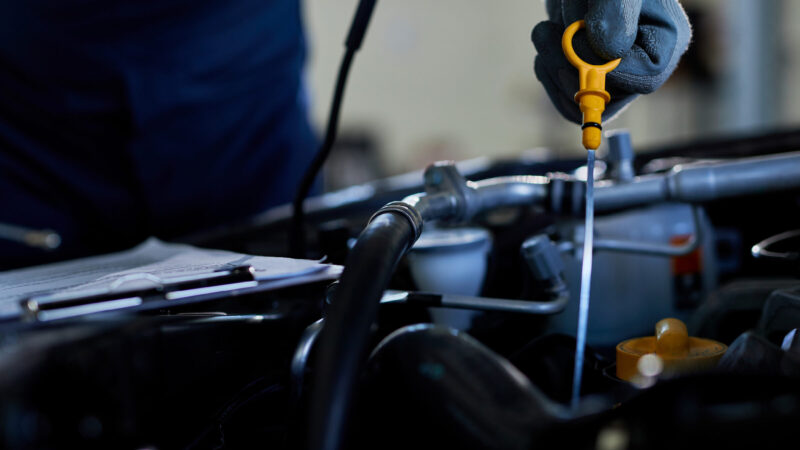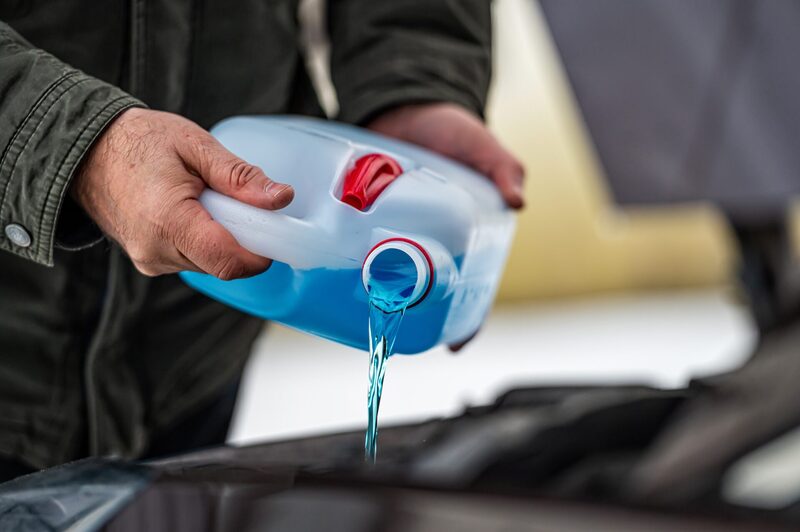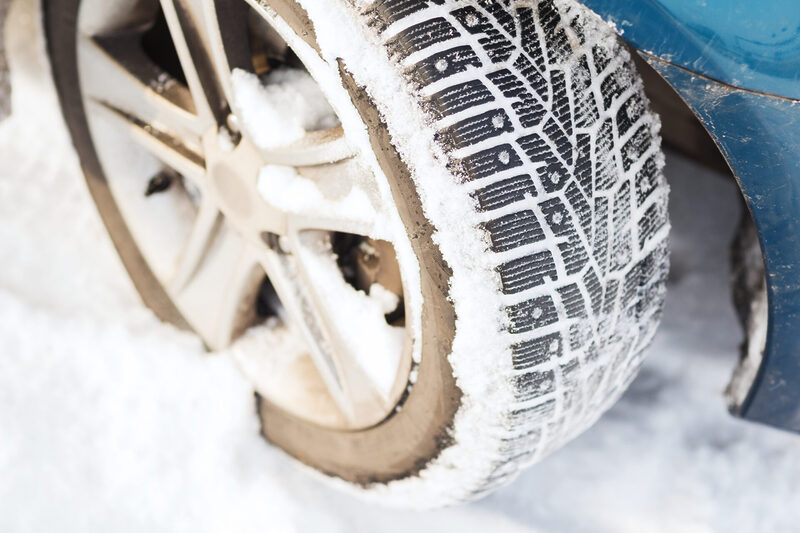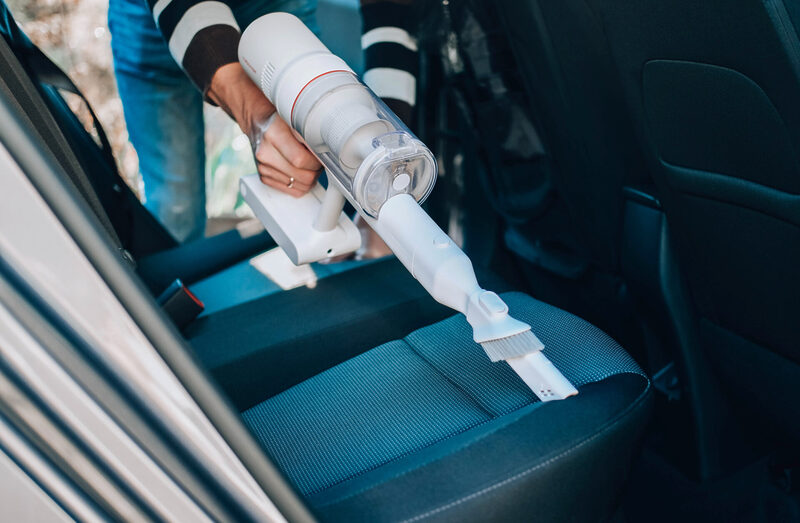
(Approx. reading time: 17 minutes)
Regular car maintenance and small changes can keep your car reliable for years, and with a good second-hand warranty from Warrantywise, you’ll avoid the shock of unexpected repair bills.
This helpful guide walks you through easy maintenance routines and practical driving habits that can make a big difference in keeping your car running smoothly and lasting longer.
Key facts at a glance:
- Annual servicing keeps your car running efficiently.
- Regularly check and top up all essential fluids.
- Tyres should maintain a minimum 1.6mm tread depth.
- Driving regularly helps to maintain good battery health.
- Smooth driving reduces wear on the engine, brakes and suspension.
- Keep your car clean to prevent rust and damage.
- Use high-quality replacement parts for reliability and safety.
- Keep an emergency kit in your car in case of breakdowns.
We’ve broken this guide into easy sections so you can jump straight to the car care tips you’re most interested in or simply read it from start to finish for the full picture.
How to get more miles from your motor:
From keeping your fluids topped up to driving smoothly, every small effort adds up to extra miles and fewer breakdowns. Owning a car for the long haul is about consistency – those small, regular habits that help you avoid big repair costs later.
With the average age of cars on UK roads now at around 10 years, taking care of your vehicle has never been more important [1]. A little extra attention today can help you avoid costly repairs and keep you confidently on the road.
Below, we’ve broken down practical tips and maintenance routines to help you keep your car running for years to come.

Top tips for looking after your car:
As with cars of any age, factors including driving style, tyre maintenance and regular servicing are vital to keeping your car healthy. By taking simple steps such as checking your car’s fluid levels and tyre pressure, you’ll be helping to keep your car on the road for longer.
1. Stick to your service schedule:
Regular servicing helps detect small issues before they become expensive problems. It’s recommended to get a full service once a year, with an interim service every 6 months to help keep your car running as efficiently as possible.
- Interim service: every 6 months.
- Full service: annually or every 10,000 miles
A full service includes the following checks:
- Engine oil and filter replacement.
- Quality and levels of essential fluids.
- Spark plugs, air filters and cambelt.
Keeping on top of your servicing schedule is the best way to get the most out of your car.
In the meantime, checking your fluid levels can help you to keep on top of maintenance from home.
Check your fluid levels:
Each fluid plays a vital role, from keeping your engine properly lubricated to ensuring your windscreen remains clean and clear.
- Engine oil keeps the engine lubricated.
- Coolant prevents overheating.
- Brake fluid ensures safe braking.
- Screen wash is essential for visibility.
Regularly checking your fluid levels ensures your car stays dependable and safe to drive.

How to check your fluid levels at home:
Engine oil:
- Park on level ground and make sure your engine is cool.
- Open the bonnet and find the dipstick (usually marked with a bright orange or yellow handle).
- Pull out the dipstick, wipe it clean with cloth or paper, then reinsert it fully.
- Pull it out again and check the oil level. It should sit between the minimum and maximum marks on the dipstick.
- If it’s low, add small amounts of oil and keep checking the dipstick until the level is between the minimum and maximum marks. Ensure you’re using the correct grade oil – you can find this information in your manufacturer’s booklet.
- The oil should appear smooth. If it’s black, thick or gritty, it might be time for an oil change.
Responsible disposal:
If you need to drain or replace any old oil or fluids, never pour them down drains or onto the ground.
Used fluids are hazardous and can harm the environment. Take them to your local recycling centre or garage, where they can be safely disposed of.
Coolant:
- Ensure the engine is cold.
- Locate the coolant tank (usually a clear plastic bottle with ‘min’ and ‘max’ markings). Make sure not to confuse this with the brake fluid reservoir.
- Check the level of the fluid – it should sit between the two lines.
- If the level is below ‘min’, top up with the correct mix of coolant and water.
- The coolant should be brightly coloured. If it’s brown or rusty, get it checked by a mechanic.
Responsible disposal:
If you ever need to drain or replace coolant, don’t pour it down household drains or outside.
Coolant contains chemicals that are toxic to wildlife and water systems. Your local council recycling centre or garage can safely collect and dispose of it.
Brake fluid:
- Find the brake fluid reservoir – usually at the back of the engine on the driver’s side.
- The reservoir is small and has ‘min’ and ‘max’ markings.
- Check that the fluid level sits between these two marks.
- If it’s below ‘min’, do not top up yourself. Low brake fluid can indicate a leak or worn brake pads and should be checked by a professional.
- Brake fluid is highly corrosive and can damage paintwork, plastic and rubber surfaces. Additionally, its moisture may react with metal parts, leading to rust and deterioration.
Responsible disposal:
Brake fluid should never be poured away or mixed with other liquids, as it’s classed as hazardous waste.
Most recycling centres, garages, or parts retailers can accept small amounts for safe disposal or recycling.
Screen wash:
- Open the screen wash reservoir. It’s usually a blue cap marked with a windscreen or water symbol.
- Pour in ready-mixed screen wash solution until it’s filled nearly to the top.
- In colder weather, use winter-grade screen wash to prevent freezing.
- Avoid using plain water – it doesn’t clean as effectively, and it can freeze in cold weather.
Responsible disposal:
If you ever need to empty or replace old screenwash, don’t pour it onto the ground or into storm drains.
Most modern screen wash is biodegradable, so small amounts can usually be diluted and poured down a household drain. For larger quantities, or if you’re unsure of the contents, take it to your local recycling or household waste centre for safe disposal. Always check the product label for guidance before disposing.

2. Battery, tyres and suspension
Battery maintenance tips:
- Drive regularly to recharge the battery.
- Avoid frequent jump-starting, which strains the system.
- Use a trickle charger for long-term storage.
Driving your car regularly is the best way to prevent battery degradation. Regular driving allows your battery to recharge, reducing the risk of your battery going flat.
If you do experience a flat battery, you will have to use jump leads or a portable battery booster to start your vehicle. While this will help to get you moving again, jump-starting puts additional strain on the battery and can damage the engine management system.
You can keep your battery topped up by using a trickle charger if you are storing your vehicle in a garage for a long period. These provide a low-voltage, steady current to the car battery, helping to maintain the battery over time.
Tyre safety and the 20p tread test:
Your tyres are one of the most important safety features on your car. Checking them regularly can make all the difference to how your car grips the road, especially in wet conditions.
- The legal minimum tread depth is 1.6mm (use our 20p test guide below).
- Check tyre pressure monthly and before long trips. You can find the recommended pressure on the tyre, or inside the driver door.
- Rotate tyres to encourage even wear.
In the UK, the legal minimum tread depth is 1.6mm across the central three-quarters of the tyre. Many experts recommend changing them sooner to stay safe and confident in all weather conditions.
How often should I check my tyre pressure?
Check at least once a month, and always before long journeys.
Keeping your tyre pressure right is just as important. If tyres are under or over-inflated, they wear out unevenly, increase fuel consumption and can make your car harder to handle.
In winter, your tyres work extra hard. Keeping them properly inflated and checking the tread helps ensure a confident drive, even on frosty mornings.
While winter tyres might seem like an extra expense, they can really be worth the cost. They’re designed to handle cold, wet, and icy conditions, helping you stay in control and avoid costly bumps or breakdowns.

How to spot suspension issues:
- Unusual noises can be signs of suspension issues.
- Uneven tyre wear can be linked to suspension problems.
- Regular inspections can help catch issues early.
Your suspension system keeps your ride comfortable and helps your tyres maintain proper grip on the road.
If you start to hear clunks or creaks, or if you feel like it’s bouncing more than usual, it could be a sign that something needs attention. Uneven tyre wear can also hint that your suspension is out of alignment or parts are wearing down.
By understanding how to maintain your tyres and what to look out for if something goes wrong with your suspension, you’re making your car safer, protecting it from long-term damage and ensuring every journey is smooth and stress-free.

3. Fuel and air conditioning care:
Keep your tank topped up:
- Don’t let your tank run empty.
- When low on fuel, the pump can draw debris from the bottom of the tank.
- Over time this can make your car harder to start.
- Diesel engines use fuel to lubricate vital components, so running low can cause unnecessary wear.
We’ve all been there – watching the fuel light come on and thinking that we can make it just a little bit further. But regularly running your tank close to empty can cause more trouble than you might think.
When fuel levels get very low, the pump works harder and can start drawing in air and tiny bits of debris from the bottom of the tank. Over time this can clog filters, wear out the pump and even make it harder for your car to start.
If you drive a diesel, it’s especially important to keep your tank topped up. Diesel engines rely on fuel to lubricate key parts, and running low can let air into the system, which may stop the engine from turning over until it’s been properly primed again.
Run your air conditioning year-round:
- Air-con systems lose refrigerant gas over time.
- Systems may need re-gassing sooner if not regularly used.
- Letting the air-con system blow cold helps keep it working efficiently.
While leaving your air-con off can save on fuel, you should switch it on every now and then to keep everything running smoothly. Let it occasionally blow cold air, even during the winter months.
Over time, your air-con system gradually loses refrigerant. If you don’t use it often, it could need re-gassing sooner than expected.
If your windows are taking longer to demist in winter, or that your car feels warmer than usual in summer, it could be a sign that your air-con needs re-gassing.

4. Smarter driving habits:
One of the simplest ways to keep your car in great shape is to drive smoothly. Try to accelerate steadily and brake gently, as sudden starts and harsh braking put unnecessary strain on your engine, brakes, and suspension.
- Accelerate steadily and brake gently.
- Avoid resting your hand on the gear stick and foot on the clutch.
- In manual transmission vehicles, use gears appropriately to reduce engine strain.
- Be mindful of potholes, kerbs and speed bumps.
- Avoid overloading the vehicle.
- Limit short journeys where the engine doesn’t fully warm up.
Drive smoothly:
It’s also worth breaking a few common bad habits. Many drivers rest a hand on the gearstick or keep a foot lightly on the clutch, but these small actions can cause wear over time. Instead, keep both hands on the steering wheel and rest your left foot in the footwell to avoid putting pressure on key components.
When changing gears, do so smoothly and deliberately. Gentle gear changes help everything run efficiently and reduce strain on your clutch and gearbox. Smooth driving not only helps to extend the life of your car, but it can also improve fuel efficiency and reduce emissions.
Avoid short journeys:
Short, frequent trips trips can be harder on your car than you might think. Engines don’t always get a chance to fully warm up, which can increase wear and reduce the effectiveness of vital fluids like oil and coolant.
If you can, try combining errands into one longer drive.
Watch your weight and road conditions:
Carrying unnecessary weight, including empty roof racks, can make your car work harder than it needs to. A quick clear-out can help your car run more efficiently, improve fuel economy and even make handling smoother.
Potholes, high kerbs and speed bumps can cause hidden damage to your tyres, wheels and suspension. Slowing down and steering carefully through these areas protects your car, saves on fuel, and keeps your car running for longer.
Smooth, consistent driving reduces wear on your brakes, clutch and suspension, saving you fuel and repair costs over time.

5. Brake care and safety:
If you notice any squeaking, grinding or a delay when you press the brake pedal, it usually means your brake pads are wearing thin. Get them checked early to avoid costly damage and to stay safe on the road.
- Squeaking or grinding can suggest problems with the brake pedals.
- Any delay when pressing the pedal can indicate the pads are wearing thin.
- It’s important to get vibrations and reduced breaking checked early.
It’s also worth paying attention to how your car feels when you brake. If you notice vibrations through the pedal or your car pulls slightly to one side, it could be a sign of uneven wear, warped discs, or issues with the brake fluid.
While engine braking can help preserve your brake pads, doing it too harshly can wear out other components over time. [2]
Getting your brakes checked promptly keeps your car running safely and gives you that all-important peace of mind every time you drive.
6. Keeping your car clean – inside and out:
A clean car isn’t just about looking good; it’s about taking care of what keeps you moving. Regular washing makes it easier to spot small issues before they become big ones, helps prevent rust and makes driving more enjoyable.
- Wash the exterior every few months to help prevent rust setting in.
- Keep the interior surfaces clean to preserve materials and prevent odours.
- A hand wash gives you the best finish and helps you spot any issues early.
Over time, dirt, salt and road grime can build up in hidden spots like the undercarriage and wheel arches where they quietly cause corrosion.
Giving your car a proper clean now and then helps protect the paintwork and metal parts, keeping your car in good condition for longer.
If you can, it’s worth washing your car yourself. While automated car washes are convenient, their stiff brushes can leave fine scratches and can often miss the trickier areas. A hands-on clean will give you better results.
Tips on cleaning your car:
- Pre-rinse your car before a deep clean.
- Mix a proper car-cleaning solution (not washing up liquid) with water.
- Start cleaning from the top down, to ensure dirt doesn’t drip down onto freshly cleaned areas.
- Wipe down with a dry microfibre cloth or chamois.
- Use a damp cloth to clean the wheels, as well as between the doors and boot.
- A wax and polish will not only look great but add an extra layer of protection and help to prevent rust.

Why using good-quality parts matters:
Using genuine, high-quality parts can help your car perform better, last longer and stay safer on the road. Cheaper components can wear out faster, damage other vehicle systems and even compromise safety if they haven’t been properly tested.
- Cheap replacement parts can wear out faster.
- Lower-quality parts may damage other aspects of your vehicle.
- Safety can be compromised if parts haven’t been properly tested.
- Investing in high-quality parts ensures better durability and reliability.
- Quality parts provide better long-term value.
Investing in higher-quality parts is a smarter choice. They offer greater durability, reliability and performance, helping to keep your vehicle safe and running smoothly for longer.
What to keep in your emergency car kit:
Even with proper maintenance and care it’s always a good idea to keep an emergency kit in your car, just in case you break down and are stranded at the side of the road.
We’ve included external links to each of these items below, so you can start to prepare your kit.
What should I keep in my car in winter?
Always carry warm clothing, a torch, de-icer, a hand-shovel and emergency food in case of a breakdown. To make sure your car is winter-ready, you can check out our article here.

Your at-home car care recap:
A few simple habits at home can go a long way in keeping your car safe, efficient and running smoothly.
- Follow your service schedule to catch small issues before they become big ones.
- Check oil, coolant and brake fluid levels regularly to keep everything running as it should.
- Maintain correct tyre pressure and tread depth for better grip, safety and fuel economy.
- Avoid running on an empty fuel tank to protect your engine and fuel system.
- Drive smoothly and avoid potholes to reduce wear on your suspension and tyres.
- Keep your car clean to prevent rust and spot problems early.
- Remove excess weight for better fuel efficiency and handling.
- Use quality replacement parts to ensure reliability and long-term value.
How an extended car warranty helps keep you on the road:
Even with the best care, unexpected problems can happen, particularly in older cars. A second-hand car warranty from Warrantywise provides protection against costly repairs to major components like your gearbox, suspension and electrical systems.
Regular maintenance combined with a warranty means fewer surprises, smoother driving, and complete peace of mind. Get your free quote now and drive confidently everywhere, every day.
Sources:
[1] The average age of cars on UK roads has reached a record high | The Independent
[2] Engine braking – what is it? And is it safe? | RAC Drive
Discover more.
Further Warrantywise articles you might find useful

Top tips on how to prepare your car for winter.
(Approx: 9 min read) Picture the scene: It’s a freezing Monday morning as you get in to your car. Frost … Continued

Britain’s cars are now ten years old on average – we reveal the Top 10 most reliable.
(Approx: 5min read) This article is also available in video form, here: For the first time, the average age of … Continued

Top 10 most reliable car models 2025.
(Approx: 3min read) In an age where automotive innovation is accelerating faster than ever, reliability remains paramount for UK used … Continued